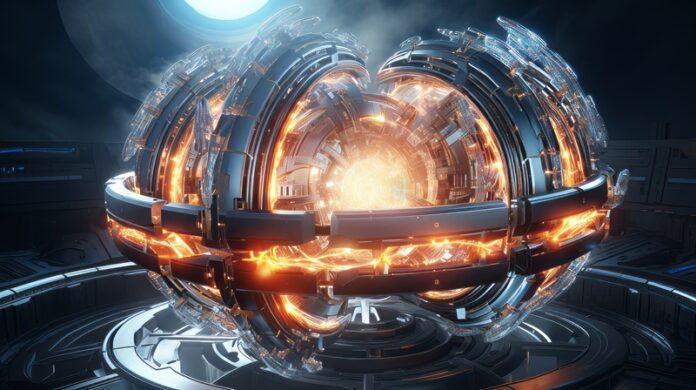Zero-emission nuclear fusion reactors will change the global energy equation. Canada has been a nuclear energy pioneer for more than 70 years. Now it wants to be at the forefront of commercial fusion. Does it have the credentials to be an industry front-runner?
A Canadian company in Vancouver, British Columbia, General Fusion, has been developing magnetized target fusion, attracting hundreds of millions of dollars in investment from entrepreneurs like Jeff Bezos. It is working with the United Kingdom Atomic Energy Authority to build a demonstration fusion reactor outside of Oxford, England to be completed before the end of this decade. It won’t be a commercial fusion plant, but a precursor to one that would follow within a few years.
Elsewhere in Canada, Canadian Nuclear Laboratories (CNL), located in Chalk River, Ontario, is partnering with several organizations and companies on fusion projects. The latest announcement came today. Stellarex, Inc., in Princeton, New Jersey, has signed a memorandum to collaborate with CNL to develop stellarator-based commercial fusion energy power plants. If all goes well the first one, the SX1, will begin feeding the U.S. power grid within the next 12 years.
The Chalk River laboratory has been home to nuclear power research in Canada since the Manhattan Project. From its research, the early 1960s saw the development of a commercial nuclear fission heavy-water (deuterium) reactor called CANDU. Today, CANDU reactors provide electrical power for Ontario where I live, and elsewhere, with 31 operating globally in China, South Korea, Romania, India, Pakistan and Argentina.
Princeton University was the home of Albert Einstein. It was also the place where the first stellarator was invented by astrophysicist, Lyman Spitzer in the 1950s. The stellarator was an alternate design to the tokamak, the doughnut-shaped plasma containment chamber that is used by ITER, the multi-country nuclear fusion power plant being built in France.
Stellarators were not doughnut-shaped. They were twisty affairs which produced challenges for the magnetic coils used to confine the plasma. Design progress has led to new stellarators that show promise. One is the Wendelstein 7-X, built at Germany’s Max Planck Institute. Another is the Large Helical Device (LHD) developed by researchers at Kyoto Fusioneering in Japan. Another one is in Madison, Wisconsin, called the Helically Symmetric Experiment (HSX).
In 2022, at Princeton advances in software controls to shape and enclose magnetic fields within stellarators are making the technology competitive with tokamak designs. That has been the inspiration to create Stellarex, a Princeton spinoff.
For CNL this latest announcement is one of several recent undertakings by the Canadian laboratory. In November 2022, it announced plans to work with General Fusion on developing fuel control systems for magnetized target fusion. In September 2023, it formed a strategic alliance with Kyoto Fusioneering Ltd. In February of this year, it announced a partnership with UKAEA to collaborate on developing new tritium fuel processing systems.
These agreements acknowledge CNL’s leadership in managing deuterium and tritium fuels, and reactor operations and maintenance. This is the expertise needed to make commercial nuclear fusion plants a reality.
CNL has also developed a regulatory environment to oversee fuel cycles, safety analysis, maintenance, inspection and the waste processing of tritium. Bringing this expertise to advance stellarator design means another potential commercial fusion reactor could be on the market by the mid-2030s.
Professor Amitava Bhattacharjee of Princeton University is the Co-Founder and Chief Science Officer of Stellarex and sees CNL’s expertise in fuel cycle, maintenance and plant safety systems as key to making the SX1 a reality.
Dr. Stephen Bushby, Vice-President, Science and Technology, at CNL in today’s partnership announcement stated:
“The Stellarex team has decades of accumulated fusion science and technology experience and expertise garnered from the leading fusion projects in the world, and CNL is looking forward to supporting their technology development with our extensive capabilities in the safe management of deuterium and tritium as well as our state-of-the-art research and development facilities for advanced reactor support and development.”
Leveraging seventy years of atomic research in Canada may soon yield a zero-emission power source that along with renewables will allow the planet to end its addiction to the burning of fossil fuels.









